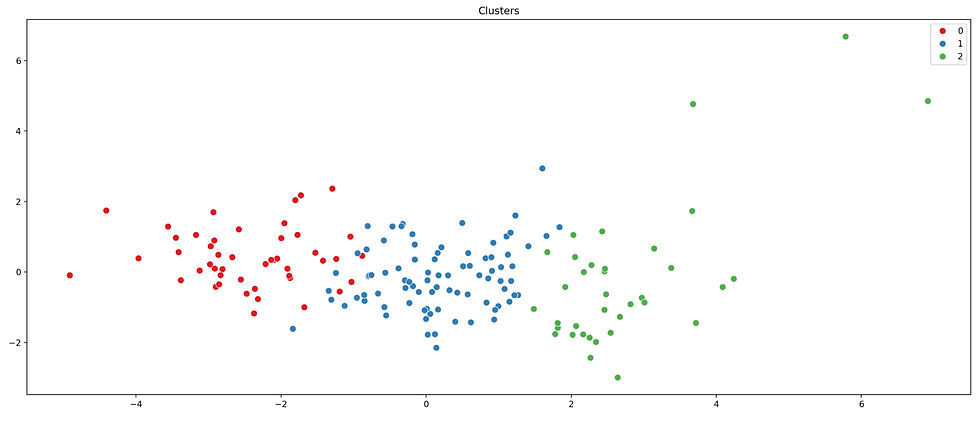Supervised vs Unsupervised Learning
- Vusi Kubheka
- Nov 21, 2024
- 3 min read
The field of machine learning is transforming industries, enabling smarter systems that adapt and improve over time. At its core, machine learning encompasses two main approaches: supervised and unsupervised learning. Each offers unique methods and capabilities tailored to specific types of data and problems. Understanding these approaches is essential for leveraging machine learning effectively in real-world scenarios.
What Sets Supervised and Unsupervised Learning Apart?
The fundamental distinction between supervised and unsupervised learning lies in the nature of the data they use. Supervised learning operates with labeled data, where input variables are paired with their corresponding outputs. This pre-labeled data acts as a guide, or "supervisor," allowing the model to learn by example. For instance, to classify images of fruits, the model might be trained with labeled examples of apples, bananas, and oranges, enabling it to predict the category of a new, unseen fruit.
Unsupervised learning, by contrast, works with unlabeled data. Here, the model is tasked with uncovering hidden patterns or relationships in the data without explicit guidance. For example, it might group customer purchasing behaviours into segments based on similarities, even if no prior categories are provided. This lack of predefined outputs allows unsupervised learning to excel in exploratory tasks, uncovering insights that are not immediately apparent.
How Each Approach Works
In supervised learning, the model learns to map inputs to outputs through iterative training. By minimising errors between predicted and actual values, the algorithm refines its understanding over time. This process is ideal for tasks like classification and regression. Classification involves assigning inputs to predefined categories, such as detecting spam emails or recognising handwritten digits. Regression focuses on predicting continuous values, such as estimating house prices based on features like location and size.
Unsupervised learning, on the other hand, takes a different path. Without predefined labels, it identifies patterns and structures within the data. A classic example is clustering, where the algorithm groups similar data points together. This technique is widely used in market segmentation, where businesses identify distinct customer groups to tailor their marketing strategies. Another common application is dimensionality reduction, where the algorithm simplifies large datasets while preserving their essential features, aiding visualisation and computational efficiency.
Applications and Real-World Relevance
Supervised learning shines in tasks where accurate predictions are paramount, making it indispensable in areas like spam detection, sentiment analysis, and weather forecasting. For instance, an email classifier trained on labeled examples can efficiently separate spam from legitimate messages. Similarly, a supervised model predicting stock prices might rely on historical data and market trends to forecast future values.
Unsupervised learning thrives in scenarios requiring exploration and discovery. It is particularly useful in fields like recommendation systems, anomaly detection, and customer persona development. For example, an e-commerce platform might use clustering to identify customers who frequently purchase similar items, enabling personalised product recommendations. In medical imaging, unsupervised learning can help detect abnormalities in scans without prior labels, assisting in early diagnosis.
Advantages and Challenges
Both approaches offer unique strengths but come with challenges. Supervised learning is straightforward to implement, especially when working with well-labeled data. However, creating these labeled datasets can be time-intensive and often requires domain expertise. Despite its accuracy, supervised models may also struggle with unseen data, as they rely heavily on the quality and scope of their training.
Unsupervised learning, while versatile, presents its own complexities. It requires large datasets to achieve meaningful results and can be computationally intensive. Moreover, interpreting the outcomes often demands human expertise to ensure the insights are valid and actionable. For example, an unsupervised algorithm might cluster data into seemingly arbitrary groups, requiring further analysis to determine their relevance.
Selecting the Right Approach
Choosing between supervised and unsupervised learning depends on the problem at hand and the nature of the available data. If the task involves predicting specific outcomes, such as classifying images or forecasting sales, supervised learning is the clear choice. Its reliance on labeled data ensures precision and reliability in tasks where accuracy matters most.
In contrast, unsupervised learning is ideal for exploratory data analysis, where the goal is to uncover patterns or groupings in raw data. It is particularly useful for generating hypotheses or gaining insights from datasets without predefined categories. This makes it invaluable for tasks like customer segmentation or detecting unusual behaviour in network security.

Comments